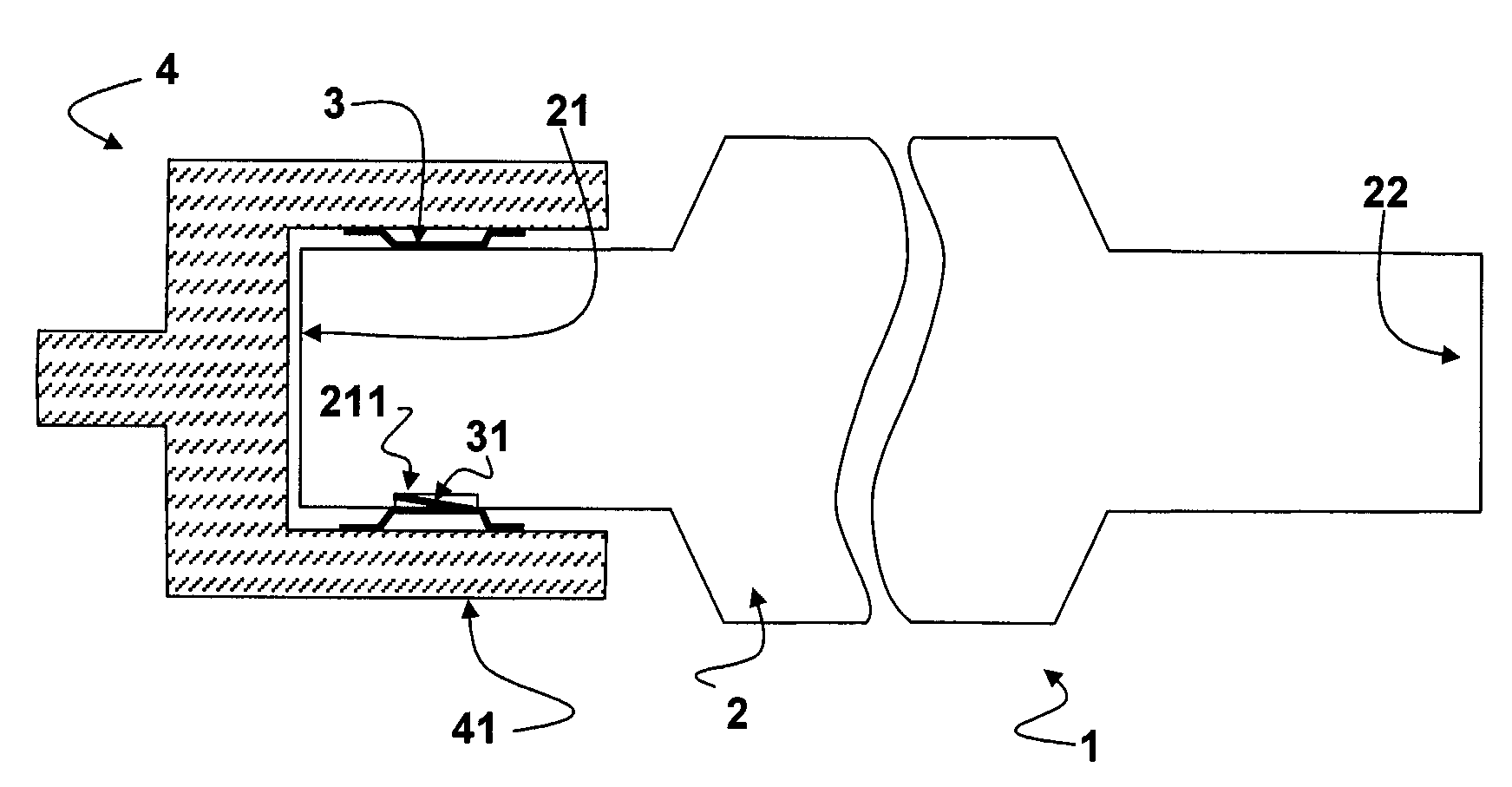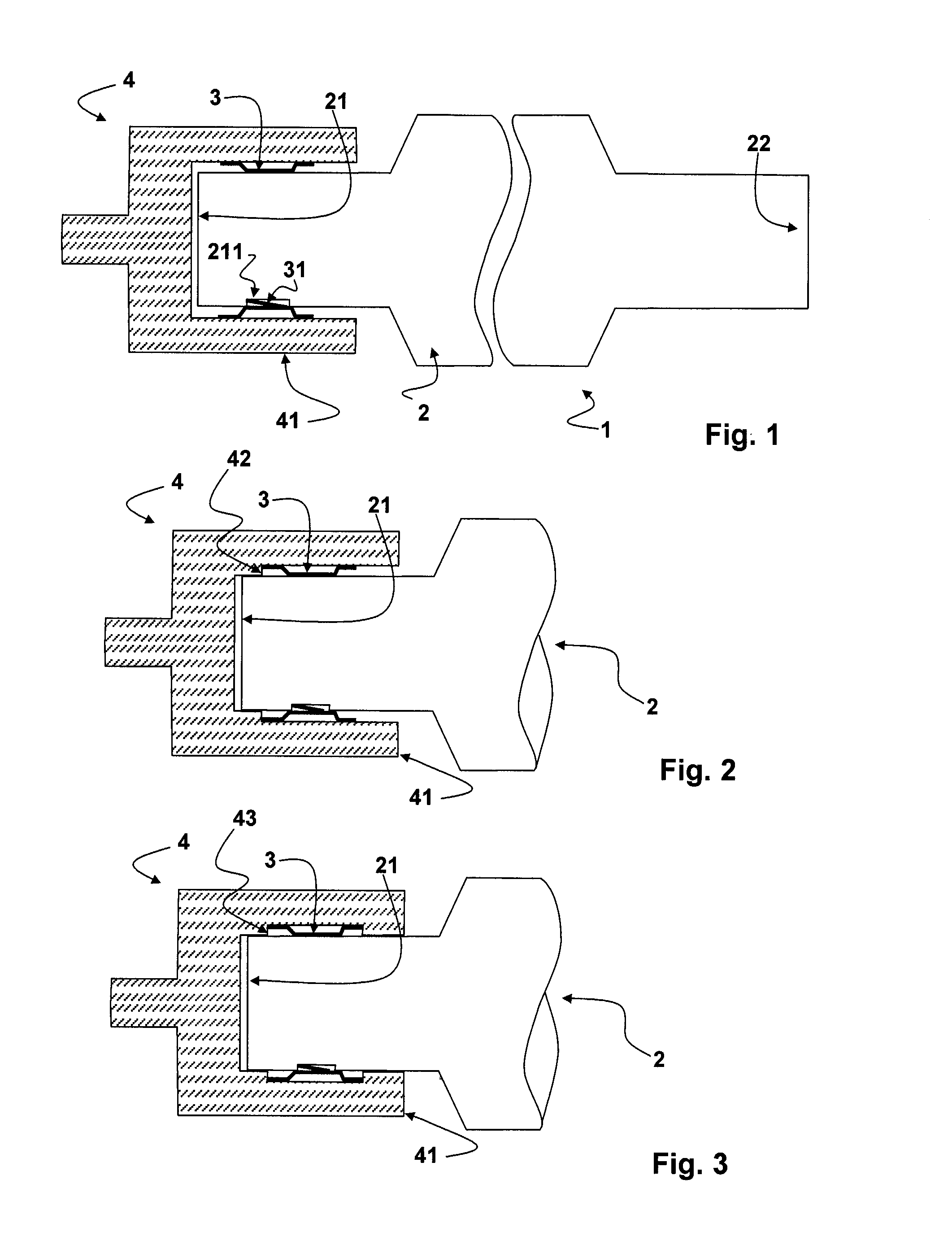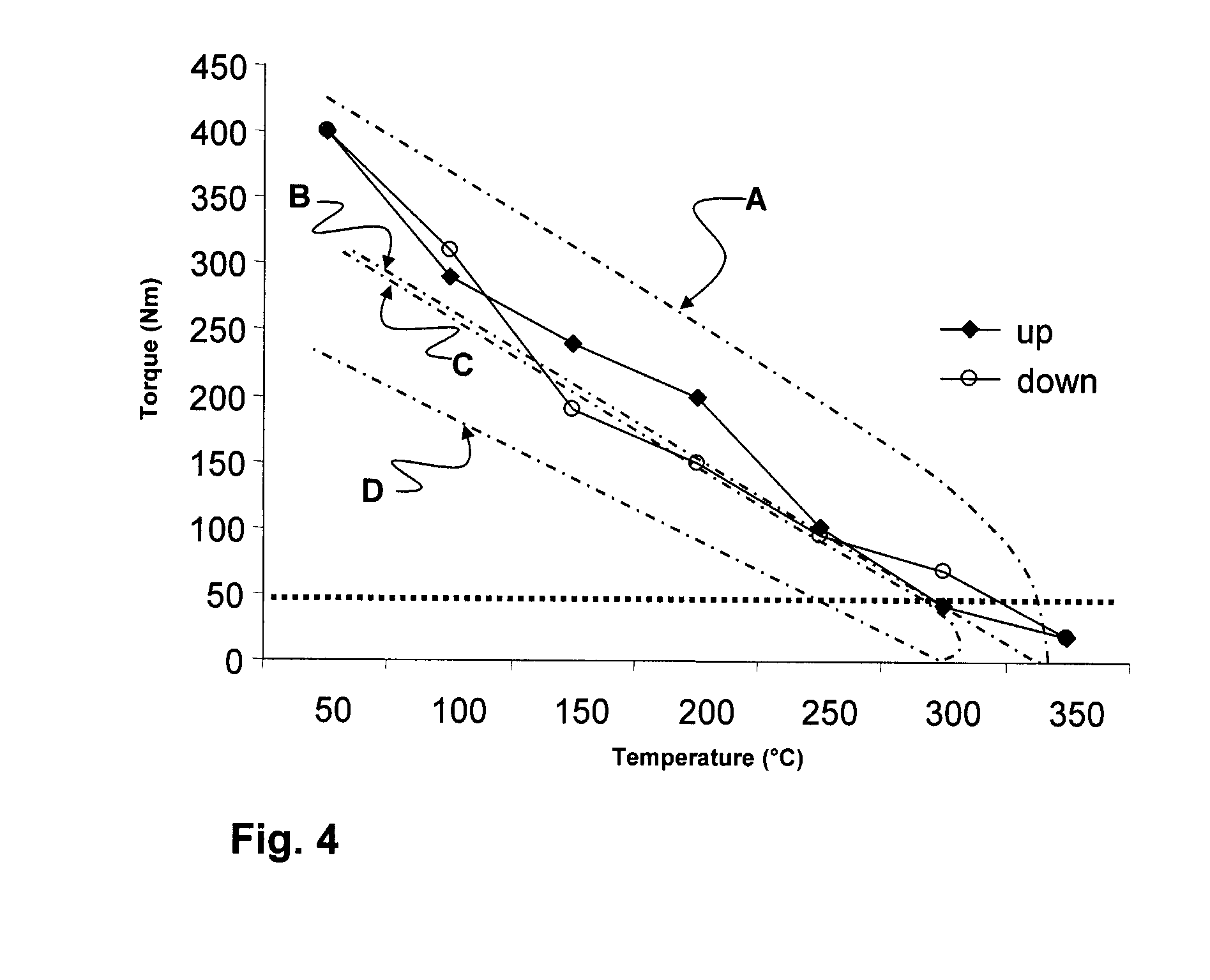Conveyor Roll And Process For Its Assembly
a technology of conveyor rolls and end caps, applied in the direction of packaging, manufacturing tools, couplings, etc., can solve the problems of end cap slipping and the diminishing power of the tolerance ring, and achieve the effect of preventing eccentric rotation of the spool and efficient torque transfer
- Summary
- Abstract
- Description
- Claims
- Application Information
AI Technical Summary
Benefits of technology
Problems solved by technology
Method used
Image
Examples
Embodiment Construction
[0021]On these figures, 1 depicts generally a conveyor roll comprising a ceramic spool 2 having two ends 21 and 22. An end cap 4 comprising a ferrule 41 is arranged on both ends of the spool 2 (only the end cap provided at the end 21 is shown on FIG. 1). A tolerance ring 3 is inserted in the end cap 4. The end cap 4 has a regular inner surface on FIG. 1, while FIGS. 2 and 3 show respectively an end cap 4 provided with a step 42 or a groove 43 for restraining the movements of the tolerance ring 3 in the end cap.
[0022]The tolerance ring can be provided with a tab 31 cooperating with the wall of a notch provided in the end of the ceramic spool 21. On FIGS. 1 to 3, the tab 31 cooperates with the wall of the notch the closest to end 21 of the spool 2.
[0023]Trials have been performed with a conveyor roll according to FIG. 2 so as to demonstrate the possibility of the conveyor roll to resist a temporary overheat and to recover its normal operating conditions when the temperature returns ba...
PUM
| Property | Measurement | Unit |
|---|---|---|
| temperature | aaaaa | aaaaa |
| temperature | aaaaa | aaaaa |
| length | aaaaa | aaaaa |
Abstract
Description
Claims
Application Information
 Login to View More
Login to View More - R&D
- Intellectual Property
- Life Sciences
- Materials
- Tech Scout
- Unparalleled Data Quality
- Higher Quality Content
- 60% Fewer Hallucinations
Browse by: Latest US Patents, China's latest patents, Technical Efficacy Thesaurus, Application Domain, Technology Topic, Popular Technical Reports.
© 2025 PatSnap. All rights reserved.Legal|Privacy policy|Modern Slavery Act Transparency Statement|Sitemap|About US| Contact US: help@patsnap.com



